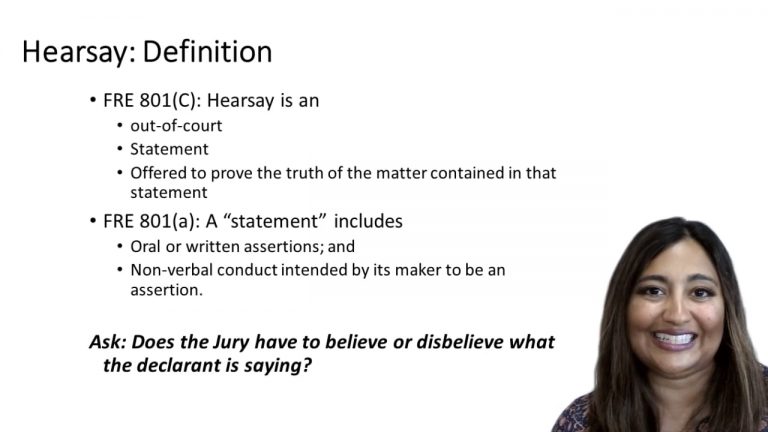SmartBrief
Confirm favorite deletion?
Evidence Keyed to Park
Ohio v. Clark
Citation:
135 S.Ct. 2173 (2015)Facts
Darius Clark lived in Cleveland Ohio with his girlfriend T.T., and her two children. Clark was also T.T.‘s pimp and he would regularly send her on trips to Washington D.C., to work as a prostitute. In March 2010, T.T. went on one such trip, and she left the children in Clark’s care. The next day, Clark took L.P. to preschool. One of his teachers observed that L.P.‘s left eye appeared bloodshot. When asked by the teacher, the child said that Dee Dee, which was Clark’s nickname did it. The jury indicted Clark with felonious assault and domestic violence. At trial, the State introduced the child’s statements to his teachers as evidence of Clark’s guilt and the child did not testify. Clark moved to exclude testimony about the child’s out-of-court statements under the Confrontation Clause.
Only StudyBuddy Pro offers the complete Case Brief Anatomy*
Access the most important case brief elements for optimal case understanding.
*Case Brief Anatomy includes: Brief Prologue, Complete Case Brief, Brief Epilogue
- The Brief Prologue provides necessary case brief introductory information and includes:
Topic:
Identifies the topic of law and where this case fits within your course outline.Parties:
Identifies the cast of characters involved in the case.Procedural Posture & History:
Shares the case history with how lower courts have ruled on the matter.Case Key Terms, Acts, Doctrines, etc.:
A case specific Legal Term Dictionary.Case Doctrines, Acts, Statutes, Amendments and Treatises:
Identifies and Defines Legal Authority used in this case.
- The Case Brief is the complete case summarized and authored in the traditional Law School I.R.A.C. format. The Pro case brief includes:
Brief Facts:
A Synopsis of the Facts of the case.Rule of Law:
Identifies the Legal Principle the Court used in deciding the case.Facts:
What are the factual circumstances that gave rise to the civil or criminal case? What is the relationship of the Parties that are involved in the case.Issue(s):
Lists the Questions of Law that are raised by the Facts of the case.Holding:
Shares the Court's answer to the legal questions raised in the issue.Concurring / Dissenting Opinions:
Includes valuable concurring or dissenting opinions and their key points.Reasoning and Analysis:
Identifies the chain of argument(s) which led the judges to rule as they did.
- The Brief Prologue closes the case brief with important forward-looking discussion and includes:
Policy:
Identifies the Policy if any that has been established by the case.Court Direction:
Shares where the Court went from here for this case.

 12m 52s
12m 52s